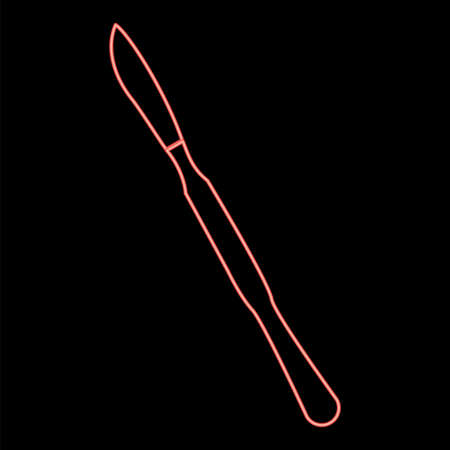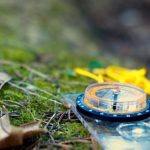1. Understanding Trolling: What It Is and Why It Works
Trolling is a popular fishing method that involves dragging baited lines or lures behind a moving boat. Unlike casting or still fishing, trolling allows anglers to cover large areas of water and target fish that are actively swimming in the open. This technique is especially useful when youre trying to locate schools of fish or when youre fishing in unfamiliar waters.
What Makes Trolling Different?
What sets trolling apart from other styles of fishing is motion—both from your boat and your bait. While traditional fishing techniques often rely on waiting for fish to come to you, trolling takes a more proactive approach by bringing your bait to the fish. This movement can trigger a predatory response in many game fish, making them more likely to strike.
Comparison of Fishing Techniques
| Fishing Technique | Movement | Main Advantage | Best For |
|---|---|---|---|
| Trolling | Bait moves with boat | Covers large areas quickly | Open water species like salmon, walleye, mahi-mahi |
| Still Fishing | No movement (stationary) | Good for bottom feeders | Catfish, carp, panfish |
| Casting & Retrieving | Bait retrieved manually | More control over lure action | Bass, pike, trout |
Types of Fish Targeted by Trolling
Trolling can be used in both freshwater and saltwater environments, making it a versatile choice for anglers across the U.S. Here are some common species targeted by trolling:
- Freshwater: Walleye, lake trout, northern pike, salmon, striped bass
- Saltwater: Mahi-mahi (dolphinfish), king mackerel, tuna, marlin, sailfish
Why Anglers Love Trolling
Trolling is especially popular among American anglers because it offers several key benefits:
- Covers More Water: Ideal for exploring new fishing spots or finding active fish.
- Great for Families and Beginners: Easy to set up and doesn’t require constant casting.
- Effective Year-Round: With the right gear and strategy, trolling works in all seasons.
- Exciting Action: The anticipation of a sudden strike while cruising adds thrill to the experience.
2. Essential Gear for Trolling
Before you hit the water, its important to have the right gear to make your trolling experience successful and enjoyable. Whether youre targeting lake trout, salmon, or striped bass, having the proper equipment will help you cover more water and increase your chances of landing fish.
Rods and Reels
For trolling, you’ll want a medium to heavy-action rod thats long enough (typically 7 to 10 feet) to manage the drag and fight of larger fish. Pair it with a conventional trolling reel that has a good line capacity and a smooth drag system. Line counter reels are especially helpful as they let you know exactly how much line you’ve let out.
Fishing Line
Braided line is popular for trolling due to its strength and low stretch, which gives better sensitivity. However, some anglers prefer monofilament for its forgiveness and shock absorption. Fluorocarbon leaders are often added for their invisibility underwater.
Downriggers and Planer Boards
If youre trolling in deeper waters, downriggers are essential. They allow you to precisely control the depth of your lure using a weighted ball and cable system. Planer boards are great for spreading lines out to cover more water horizontally, especially when targeting fish near the surface.
Lures and Baits
The type of lure you use depends on what species youre after. Here’s a quick guide:
| Target Fish | Recommended Lures |
|---|---|
| Lake Trout | Spoons, swimbaits, flashers with flies |
| Salmon | Dodgers with hoochies, cut plug herring, spoons |
| Striped Bass | Diving plugs, umbrella rigs, bucktail jigs |
Electronics: Fish Finders & GPS Units
A fish finder is a game changer when it comes to locating schools of fish and understanding the underwater structure. Look for models that offer CHIRP sonar or side imaging for more detail. GPS units are also critical—they help you mark productive spots and navigate safely back to shore.
Popular Electronics Features:
- CHIRP Sonar: Better target separation and depth performance.
- GPS Mapping: Save waypoints and track your trolling routes.
- AutoChart Live: Create custom contour maps as you troll.
Trolling Essentials Checklist:
- Trolling rods (7–10 ft)
- Trolling reels with line counters
- Braided mainline + fluorocarbon leader
- Downriggers or planer boards (optional but useful)
- A variety of lures based on target species
- Fish finder with sonar capabilities
- GPS unit or combo unit with mapping features
With this gear in your setup, youll be well-prepared to start your trolling journey with confidence.

3. Choosing the Right Trolling Setup
If youre just getting started with trolling, picking the right setup can feel overwhelming. But dont worry—well break it down so its easy to understand and match your gear to the type of water you’re fishing, the species you’re after, and how much you want to spend.
Match Your Gear to the Water
Where you plan to troll plays a big role in what kind of setup you need. Here’s a quick comparison:
| Water Type | Recommended Gear |
|---|---|
| Freshwater (lakes, rivers) | Medium-action rod, 10-20 lb test line, smaller lures like crankbaits or spinners |
| Saltwater (coastal, offshore) | Heavy-duty rod, 30-80 lb braided line, trolling plugs or skirted lures |
Target Species Considerations
The fish youre after will also determine your trolling setup. For example:
| Species | Recommended Line Strength | Lure Type | Trolling Speed |
|---|---|---|---|
| Lake Trout / Walleye | 10-20 lb mono or fluorocarbon | Spoons, crankbaits | 1.5–2.5 mph |
| Striped Bass / Kingfish | 20-40 lb braid or mono | Diving plugs, live bait rigs | 2–4 mph |
| Mahi-Mahi / Tuna | 50-80 lb braided line with fluorocarbon leader | Skirted lures, cedar plugs | 5–8 mph |
Setups for Every Budget
Budget-Friendly Options ($)
If youre just starting out and don’t want to spend a lot, go for a combo rod-and-reel package designed for trolling. You can find decent setups under $100 that work well for freshwater trolling.
Mid-Range Options ($$)
A step up in quality includes graphite rods and more reliable reels with better drag systems. These are great if you plan to troll regularly and want longer-lasting gear.
High-End Setups ($$$)
If youre serious about saltwater trolling or going after big game fish, invest in heavy-duty rods and precision reels from brands like Penn or Shimano. These setups can cost several hundred dollars but are built to last and perform at a high level.
Trolling Speed Tips
Your boat speed matters more than you might think. Going too fast can make your lure look unnatural, while going too slow won’t trigger bites. Start slow and adjust based on what you’re targeting. Use a GPS or fishfinder with speed tracking to keep things consistent.
Lure Types and When to Use Them
| Lure Type | Best Used In | Description |
|---|---|---|
| Spoons | Cold water, deep lakes | Mimic baitfish with flashy movement; great for trout and salmon. |
| Diving Plugs (Crankbaits) | Lakes, reservoirs | Dive to specific depths; good for bass and walleye. |
| Skirted Lures / Trolling Rigs | Offshore saltwater fishing | Create bubbles and motion; attract pelagic fish like mahi-mahi or tuna. |
| Live Bait Rigs | Bays and nearshore waters | Naturally entice predatory fish; often used for kingfish or striped bass. |
Final Tip: Stay Flexible!
No single trolling setup works everywhere. Try different gear combinations until you find what works best in your favorite spots. The more time you spend on the water experimenting, the better youll get at matching your gear to each situation.
4. Basic Trolling Techniques for Beginners
If youre just getting into trolling, it can feel a little overwhelming at first. But dont worry — mastering the basics is easier than you think. Here are some beginner-friendly techniques to help you set up your lines, control your trolling speed, and read the water so you can start catching fish more consistently.
Setting Up Your Lines
Proper line setup is key to effective trolling. Youll want to make sure your bait or lure is presented at the right depth and distance behind your boat. Heres a quick guide:
| Component | What to Do |
|---|---|
| Rod Holders | Use adjustable rod holders to keep lines steady and spaced apart. |
| Leader Line | Attach a strong fluorocarbon leader if targeting toothy or wary fish. |
| Lure/Bait Placement | Let out 50–100 feet of line, depending on water clarity and target species. |
| Downriggers/Planer Boards | Use these tools to spread lines and reach desired depths. |
Controlling Your Trolling Speed
The speed of your boat has a big impact on how natural your lure looks in the water. Different fish prefer different speeds, but heres a general rule of thumb:
| Fish Species | Recommended Speed (mph) |
|---|---|
| Trout & Salmon | 1.5 – 2.5 mph |
| Walleye | 0.8 – 1.5 mph |
| Bass & Pike | 2.0 – 3.5 mph |
| Mahi Mahi & Tuna (Saltwater) | 4.0 – 7.0 mph |
If youre unsure what speed to use, start slow and adjust based on how your lure behaves in the water. It should swim naturally without spinning out or dragging awkwardly.
Reading the Water
Knowing where fish are likely to be will save you time and increase your chances of success. Here are some signs and features to watch for while trolling:
- Baitfish Activity: Look for jumping baitfish or birds diving — this usually means predators are nearby.
- Temperature Changes: Use a fish finder with temperature readings; many fish gather along thermoclines (temperature breaks).
- Underwater Structure: Fish love areas like drop-offs, weed beds, submerged rocks, or ledges.
- Water Color Changes: Slight changes in water color can indicate currents or nutrient-rich areas that attract fish.
Troubleshooting Tips for Beginners
- If you’re not getting bites, try changing lure colors or sizes.
- Tangle issues? Stagger line lengths and use planer boards to spread your presentation.
- No luck in one area? Don’t hesitate to move — covering more water is part of trollings strength.
Trolling might seem technical at first, but once you get the hang of these basics, it becomes an exciting and productive way to fish. Practice makes perfect — so get out there and start experimenting with different setups and speeds!
5. Tips for Success and Common Beginner Mistakes
If youre new to trolling, its easy to get overwhelmed by all the gear and techniques. But with a few simple tips and an awareness of common rookie mistakes, you can hit the water with confidence and improve your chances of landing that first big catch.
Practical Tips to Boost Your Trolling Game
- Start Slow: Speed is everything in trolling. For most freshwater species like trout or walleye, keep your speed between 1.5–2.5 mph. Saltwater trolling may require faster speeds, but slow and steady usually wins the race.
- Use a Fish Finder: A fish finder or sonar unit helps you locate fish depth, structure, and baitfish schools — key information for successful trolling.
- Keep Lines Organized: Avoid tangles by staggering line lengths and using planer boards if running multiple rods. This also lets you cover more water efficiently.
- Match Lure Depth to Fish Location: Use diving lures, weights, or downriggers to get your bait where the fish are hanging out.
- Watch Your Rod Tips: A bouncing tip means your lure is working properly; no action may mean weeds or a tangled lure.
Common Mistakes Beginners Should Avoid
| Mistake | Why It’s a Problem | What to Do Instead |
|---|---|---|
| Trolling Too Fast | Lures dont perform properly; fish may ignore them | Check lure specs and stick to recommended speeds (usually under 3 mph) |
| Ignoring Weather & Water Conditions | Affects fish activity and bait presentation | Check wind, temperature, cloud cover, and water clarity before heading out |
| Using the Wrong Gear | Poor rod sensitivity or mismatched line can lead to missed bites | Choose trolling-specific rods, reels, and line suited for your target species |
| Lack of Patience | Trolling is a slow game; rushing leads to frustration and poor results | Stay focused, monitor your gear, and give it time to work |
| Not Adjusting for Depth Changes | Lures may run above or below the strike zone | Use weighted rigs or downriggers to maintain proper depth as conditions change |
Bonus Tip: Keep a Fishing Log
Write down what worked — lure type, speed, weather, location — so you can repeat your successes on future trips. Patterns will emerge over time that can seriously up your trolling game.
Your First Trolling Trip Doesn’t Have to Be Complicated
The key is staying observant, being patient, and learning from each outing. With these tips in mind, youre already ahead of the curve.
6. Popular Trolling Spots in the U.S.
If youre just getting into trolling, knowing where to go is just as important as having the right gear and techniques. The United States is home to countless lakes, rivers, and coastal regions perfect for trolling different species like salmon, walleye, and striped bass. Here’s a breakdown of some of the top trolling destinations across the country that are beginner-friendly and known for great fishing action.
Top Trolling Locations by Region
| Region | Location | Main Species | Why Its Great for Beginners |
|---|---|---|---|
| Northeast | Lake Champlain (NY/VT) | Lake trout, landlocked salmon | Calm waters and lots of access points |
| Midwest | Lake Erie (OH/PA/MI) | Walleye, steelhead | Popular charter options and consistent bites |
| South | Lake Texoma (TX/OK) | Striped bass | Year-round action and easy boat launches |
| West Coast | Columbia River (WA/OR) | Chinook salmon, steelhead | Smooth current areas ideal for trolling passes |
| Southeast Coast | Chesapeake Bay (MD/VA) | Striped bass (rockfish) | Tons of guides and beginner-friendly charters |
Lakes Perfect for Trolling
Lakes are a great starting point for beginners because theyre generally more sheltered from rough weather than coastal waters. Lakes like Lake Michigan and Lake Ontario offer big-water experiences with opportunities to catch species like salmon and lake trout. Smaller lakes such as Lake Winnebago in Wisconsin or Kentucky Lake also provide excellent trolling conditions for crappie and walleye.
Recommended Lakes:
- Lake Michigan: Excellent for coho and chinook salmon during spring and summer.
- Kentucky Lake: Known for white bass and crappie; easy access ramps available.
- Lake of the Woods (MN): Prime destination for walleye trolling.
Trolling Coastal Waters
If youre feeling ready to take your trolling skills offshore, the Atlantic and Pacific coasts offer incredible opportunities. For example, Cape Cod in Massachusetts is famous for striped bass trolling during the summer months. On the West Coast, San Francisco Bay provides good inshore trolling for halibut and striped bass.
Coastal Areas Worth Exploring:
- Cape Cod Bay (MA): Ideal in summer for stripers using umbrella rigs or tube lures.
- Tampa Bay (FL): Great inshore spot for trolling for mackerel and sea trout.
- Pudget Sound (WA): Offers consistent salmon runs perfect for slow trolling techniques.
No matter where you live in the U.S., there’s likely a solid trolling spot not too far away. Start local if youre new, then branch out to explore these top destinations once youre more comfortable with your setup and technique.


